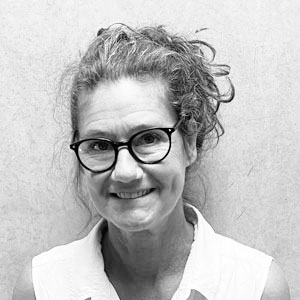
Newsletter April 2024: About supervision and feedback
In this month’s newsletter you can read about Supervision and Feedback, about how students seek and use feedback, as well as how the chiropractic study programme at SDU is improving their feedback to students during their clinical placement.
Much of the research dealing with supervision and feedback focuses on supervision situations and the lecturer’s options for action. This is for good reason, as it is part of the lecturer’s professional role to offer qualified supervision and feedback. However, we also know that the formal supervision and feedback that take place at the university do not always work as wanted; the lecturer often finds that the student does not use the feedback given very much; the student perceives the feedback as difficult to apply and often wish for more concrete instructions – and more feedback in general.
When we, as lecturers, make an effort to provide feedback that encourages the student’s own reflection in an effort to make the student ‘self-directed’ and independent of lecturer evaluations, it becomes too abstract for the student. And this is a dilemma because, on the one hand, we know that what makes students independent and able to assess their own academic abilities is feedback at Process and Self-Regulation levels. On the other hand, this is too demanding for many of our students, so they call for feedback at Task level, which we know is not particularly conducive to students’ learning opportunities (Hattie & Timperley, 2007).
A recent research project has investigated into how students experience feedback and what types of input they use to enhance their various products (Jensen, Bearmann & Boud, 2022). They find that students often feel exposed and criticized when they receive formal feedback, such as during agreed-upon supervision meetings. However, this is not the case when students talk about elicited feedback. Here, they have autonomy over whether they present something, which specific elements they want input on, and they also decide when and how to approach fellow students, lecturers, use rubrics, old assignments, and any other available resources. In this way, they can direct the feedback and specifically tailor it to their individual needs.
The article also describes how students use incidental feedback in their work to develop or improve their assignments and presentations. This form encompasses conversations they happen to overhear, discussion forums they come across, feedback given to fellow students, or texts they randomly encounter. Whatever appears relevant to the work they are engaged in is incorporated and enhances their learning and/or performance.
These new perspectives on how students experience and use feedback call for us to consider the opportunities we provide for students to self-initiate and serendipitously encounter relevant feedback. What academic resources do we make available?
What opportunities exist for engaging in academic discussions with older students or faculty? Do we encourage students to tune in to anything that might be relevant to their project, including things that happen by chance? There seem to be interesting additions to our usual thinking and practices regarding supervision and feedback in Jensen, Bearmann & Boud’s research results, and potentially new ways to approach the dilemma of supervision levels if we make an effort?
At the University of Southern Denmark's chiropractic study programme, they also recognize the potential in improving their supervision practices. Casper Nim who is assistant professor at SDU and responsible for the clinical coordinating function at Spine Center South at Lillebælt Hospital presents a new project they have recently embarked on to improve the feedback that the 10th semester chiropractic students receive during their 8-week clinical placement at the Spine Center. This initiative fundamentally stems from the fact that they now have three times as many students as they did five years ago. The increased number of students has led to changes in the length of the clinical placement and consequently increased attention to ensuring that students make the most of the time they have for patient examinations and receiving feedback on their clinical work.
Feedback at the chiropractic study programme is understood as a significant and crucial step towards making students self-reflective and ultimately independent with competencies to assess their own professional efforts.
Casper Nim believes that one way to qualify feedback approaches that lead to independence is to enhance the clinical supervisors' feedback methods. In collaboration with SDU UP, he plans to develop a couple of short self-paced courses that all clinical supervisors must undergo. The goal is to establish a common theoretical framework, develop a shared supervision theoretical language, and continuously work on making feedback to students even more appropriate. These courses will hopefully also raise awareness among individual supervisors about the use of different strategies in different situations. Currently, the practice is for each supervisor to guide as they see fit, which usually works fine, but with a common theoretical foundation, the group collectively can develop and enhance the feedback the students receive, achieving the goal of competent, self-reflective, and independent chiropractors. Casper Nim and SDU UP aim to publish the self-paced courses for all regional hospitals that supervise SDU's pre-graduate clinical students (e.g., medicine, psychology, pharmacology).
Should other academic environments be interested in working on improving feedback practices, SDU UP is ready to assist.
Literature
Boud, D., and E. Molloy. 2013: “Rethinking Models of Feedback for Learning: The Challenge of Design.” Assessment & Evaluation in Higher Education
Hattie & Timperley 2007: The Power of Feedback
Lasse X Jensen, Margaret Bearman & David Boud, 2022: Feedback encounters: towards a framework for analysing and understanding feedback processes
Tegan Little, Phillip Dawson, David Boud & Joanna Tai, 2023: Can students’ feedback literacy be improved? A scoping review of interventions (https://udlguidelines.cast.org/engagement/effort-persistence/mastery-oriented-feedback/mastery-oriented-feedback-research)
SDU Blog

Read Afsaneh Mohammadnejad's blog post: Enhancing students’ engagement in learning process
SDU Blog

Read Parisa Niloofars blog post: Challenges in Assessing Student Learning: Navigating Students’ Silence in Classes
